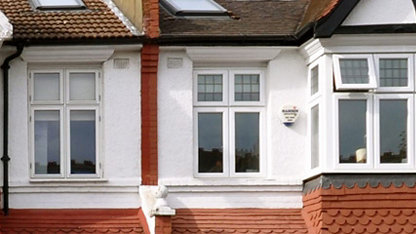Considerable opportunity for energy efficient retrofits in the renovation market
Since 2017 RICS Data Services have been involved in delivering a three-year service contract with the European Commission to improve the EU Building Stock Observatory for the Directorate General for Energy.
“A better understanding of the building stock is necessary to steer an improvement in the depth and rate of buildings’ renovation and to design effective policy measures and market support mechanisms” – explains David Crosthwaite, RICS Head of Data Services. “Given the lack of reliable and consistent data on the building stock across EU Member States the role of the Building Stock Observatory will be essential” – he adds.
Insights from the Building Stock Observatory
Characteristics of the EU building stock
There are approximately 131 million buildings within the Member States of the European Union, the vast majority of these buildings are residential, by a factor of almost ten to one in absolute terms. However, if measured by floor area the residential building stock accounts for approximately 75% of the total with the remaining 25% being non-residential buildings.
Across the EU there are 119 million residential buildings: France (21m) has the largest number followed by Germany (19m), with a further 11 million in the UK, and 10 million in Spain and Italy. The remaining 39 million are distributed between the other 23 EU Member States. The breakdown by building type is as follows: 42% flats/apartments; 34% detached dwellings; 24% semi-detached dwellings.
There are 12 million non-residential buildings within the EU: Spain (1.8m) has the largest number followed by France (1.7m), Germany (1.6m), and the UK (1.3m). The remaining 6 million are distributed across the other 24 EU Member States. The breakdown by building type is as follows: 24% public and private offices; 23% wholesale & retail; 18% educational buildings; 14% other; 11% healthcare; 10% hotels & restaurants.
The largest proportion of the EU building stock is within urban centres (43%), with 33% in urban clusters and 24% in rural areas.
Energy performance of the EU building stock
Within the EU, 42% of non-residential buildings and 38% of residential buildings were built pre-1970, before the widespread adoption of energy efficiency measures. The age of the EU built stock suggests that to reach agreed energy efficiency targets a significant level of renovation will be required. Currently, approximately 12% of the EU residential built stock has been renovated to meet climate change targets, while 9% of the non-residential stock has been renovated. The data indicates a significant opportunity exists for energy efficiency retrofits to both residential and non-residential buildings throughout the EU.
In 2002, energy performance certificates (EPCs) for buildings were introduced (A=most efficient; to G=least efficient). Across the EU 35% of buildings have an EPC rating between D and G, suggesting that there is considerable scope for improving existing buildings to reach the most efficient energy performance rating.
Improved availability of transparent information on building stocks will allow policy makers to be better informed. For instance, data contained in the Observatory can contribute to the improvement of the way the building sector is being considered in economic modelling of energy efficiency policy options. More and better data will support the decisions of all stakeholders in the sector, including building owners.














